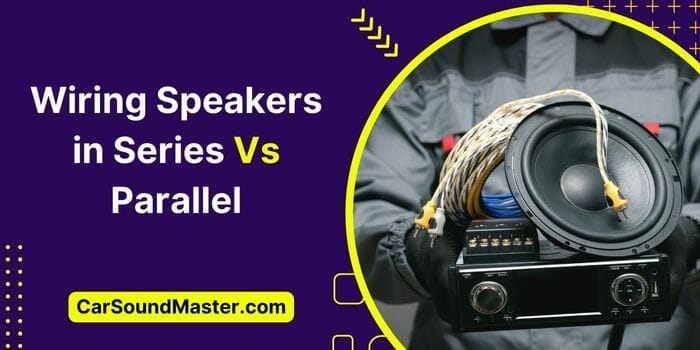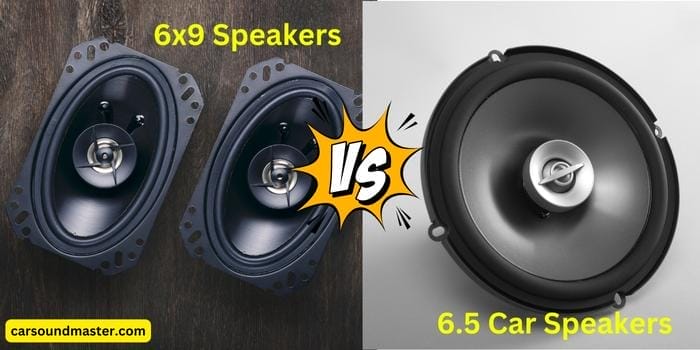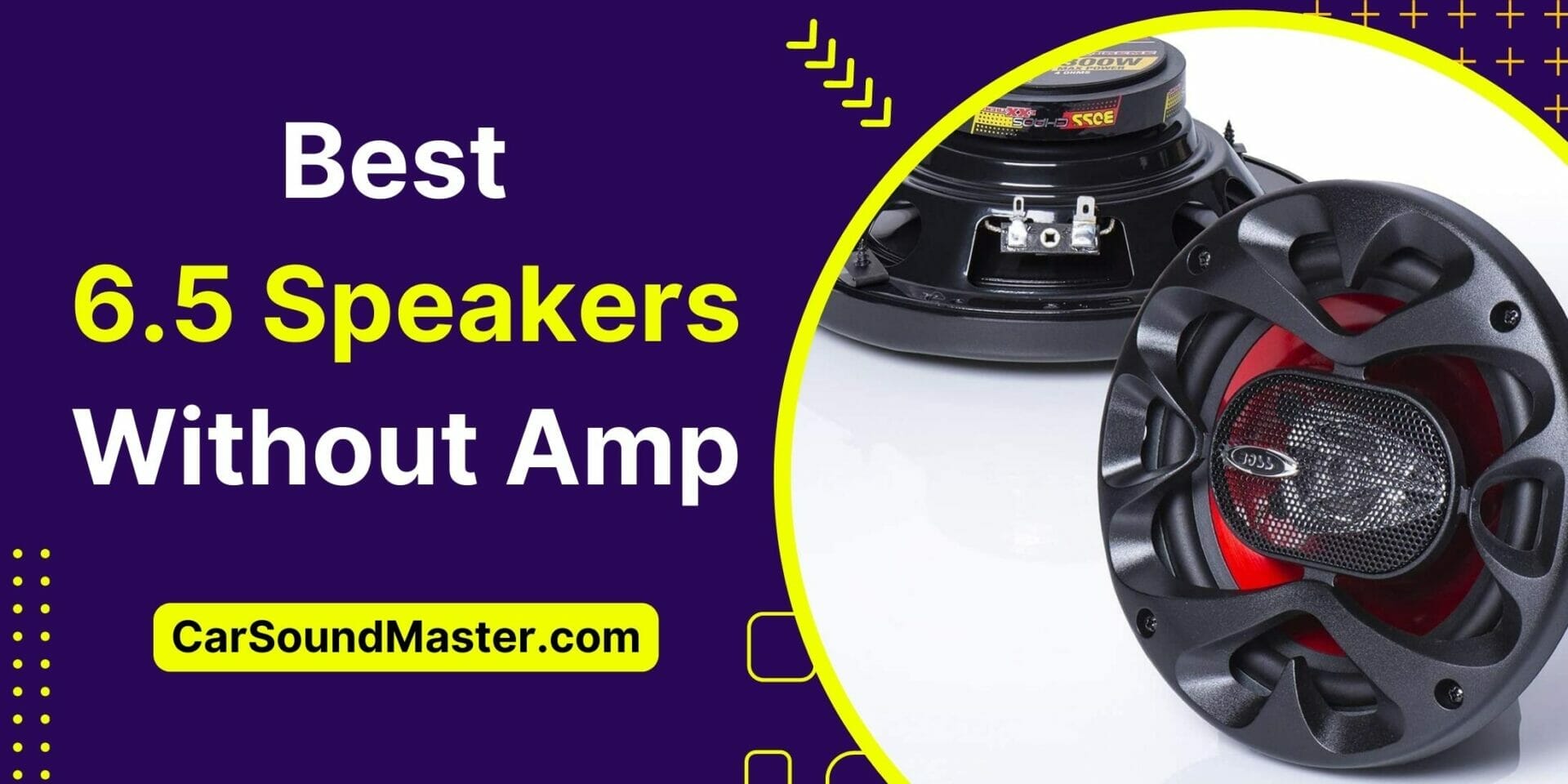How to Install or Add Center Speaker to Car Stereo in the Car?
In today’s music scene, many people crave a powerful audio experience.
However, some encounter issues where the sound seems to emanate predominantly from the sides, lacking the crispness and definition they desire. This dilemma is commonly known as the Black Hole Syndrome.
Imagine being in your car, immersed in music, yet the sound primarily comes from the sides, leaving the dash area with little to no audio presence.
Rectifying this situation is not only possible but also a bit challenging. The Black Hole Syndrome exhibits a standard occurrence in such scenarios.
If you find a gap or distance in the sound and yearn to fill it, the solution lies in the center channel – the antidote for the Black Hole Syndrome.
The following article outlines the entire process of integrating a center speaker into your car stereo setup, ensuring you grasp the complete procedure.
Wiring A Speaker
When it comes to wiring a center speaker, you have two approaches at your disposal: the bridge stereo method and the summed mono method.
The simpler of the two is the bridge stereo method. This method doesn’t require an additional amplifier. You can effortlessly create a center channel by connecting a third speaker to the existing left and right front speakers.
On the other hand, the summed mono method involves combining the left and right channels into a mono signal.
To wire the center speaker using the bridge stereo method, splice the positive lead from the center speaker into the positive wire that runs to the front left speaker.
Simultaneously, connect the negative lead to the negative wire leading to the right front speaker. The connection is passive after the amplifier.
For volume control of the center speaker, integrate an L-pad in line with the speaker.
This device plays a crucial role in managing the power delivered to the speaker without altering the impedance seen by the amplifier, allowing for a dynamic adjustment of the power volume.
Read here about speaker wire Gauge and Feet.
Purchase A Signal Processor:
Your quest for superior audio quality centers around the coveted center channel. To optimize this, consider acquiring a signal processor designed specifically for the center channel.
Before amplification takes place, the audio signal undergoes processing through a standalone component.
Typically positioned between the amplifier and the source unit, this component plays a crucial role in shaping the audio experience.
The center-channel processor is the maestro behind the creation of authentic center-channel information.
It goes beyond a simple mono signal delivery, incorporating a true algorithm to achieve the best approximation of accurate center-channel details.
Moreover, the surround sound processing circuitry of this caliber extends its capabilities to decode intricate movie soundtracks.
Some models even go the extra mile, providing a synthesized surround effect for a truly immersive auditory experience. Elevate your audio journey by embracing these advancements in sound technology.
First Make A Plane For Installing The Center Channel Speaker:
Embarking on the installation of a center channel speaker is a relatively straightforward process. Once you’ve settled on a specific scheme for your center channel speaker setup, it’s time to get hands-on.
Before you reach for the screwdriver, I recommend mapping out the procedure. Here’s a step-by-step guide for you to follow:
- Begin by deciding where you want to mount the speaker. This decision sets the stage for the rest of the installation.
- Next, carefully choose the size and type of speaker you intend to install. This selection influences the overall sound performance.
- Opt for a ballpark crossover point. Even if your system boasts an active crossover, consider installing a passive high-pass network to safeguard the center channel speaker from potential damage.
- Determine the power requirements and choose an amplifier if necessary. Ensuring the right power supply is crucial for optimal speaker performance.
- Now, it’s time to physically install the speaker according to your chosen location. Secure it in place, making sure it aligns with your earlier decision.
- Finally, fine-tune the adjustment level of the installed speaker. This step ensures that the audio output meets your preferences, providing a well-balanced and immersive listening experience.
With this thoughtful approach, you’ll not only simplify the installation process but also enhance the overall quality of your audio setup. Enjoy the dynamic sound that follows!
Location Of Mounting The Center Channel Speaker:
Discovering the perfect spot to mount your center channel speaker involves three potential locations: the middle of the dash, behind the rearview mirror, and within the central air conditioning duct of your car.
For those with a factory-installed setup, the dash is the prime choice; otherwise, hitching the speaker onto the rearview mirror becomes a viable alternative.
Venturing into the third option requires a bit of ingenuity—installing the speaker within the air conditioning duct.
While this approach is clever, it comes with a caveat: seating may be limited due to space constraints.
Checklist of Tools
Now, if you’re gearing up for a DIY installation, here’s a checklist of tools you’ll need to get the job done right:
1. Screwdriver:
This trusty tool is a must-have for securing your center channel speaker in place.
2. Wire Snips:
Precise wire cutting is essential, and wire snips are the key to achieving a clean and accurate installation.
3. Crimping Tool or Soldering Gun:
Ensure a secure and reliable connection by having either a crimping tool or a soldering gun on hand. This step is crucial for the electrical aspects of the installation.
Armed with these tools and a dash of DIY spirit, you’re all set to bring your center channel speaker into the spotlight, enhancing your in-car audio experience. Happy installing!
I also have a written guide on Best Center 6.75 Car Speakers, make sure to have a look at my list.
Installing & Adding Center Speaker to Car Stereo in a Specific Place:
You can also install the center channel in a specific place.
A Center Channel Speaker Can Be Installed IN Dash:
Upgrading your factory dash speaker should be a breeze, especially if you opt for a speaker of the same size as the factory driver. Kick off the process by unscrewing the stock speaker’s grilling cover.
To ensure a clean installation, thread an appropriate length of speaker [4-inch car speakers] wire through the dash, reaching the crossover network and amplifier location.
Secure the wire under the dash using a rubber grommet or a wrap. Preventing electrical shorts is a wise move—wrap a piece of electrical tape around the terminal before connecting the wire to the positive and negative speaker terminals.
Once the new driver is securely screwed in place, reattach the stock grill cover. If your chosen speaker is a different size than the factory cutout, brace yourself for a bit of fabrication work involving custom mounting plates and aftermarket grill assembly.
Installing a Center Channel Speaker on the Air-Conditioning Duct:
Consider this approach a last resort, and if you choose it, seek the expertise of an experienced installer, as it’s a bit of an art and can be a bit of a pain.
Remove any panels or assemblies providing access to the air conditioning duct if you’re feeling adventurous.
Fabricate a bracket to secure the speaker inside the duct, ensuring the driver faces the duct’s interior. Get creative—there’s no one-size-fits-all method for this.
A wooden “donut” is an option, fitting snugly in the duct with holes matching the speaker’s rear assembly.
Drill a small speaker wire hole inches behind the driver’s mounting location, a few inches away from the dash.
Mount the driver on the donut, attach the speaker lead, and secure the donut to the duct with silicon glue before reattaching the cover.
Written article on fixing 6×9 speakers in 6×8 speaker holes.
Fine-Tuning the Level:
After installing the speaker, it’s time to refine its output.
The center channel speaker fills the audio void, not standing alone but enhancing the overall music source. Adjustment is straightforward with the summed mono or processor route.
Turn down the center channel amplifier to start, controlling input sensitivity.
Gradually increase the center channel until you strike the right balance between the left and right speakers. Some signal processors, like the Gavotte, offer a separate level of control for the center channel.
Read the comparison between JBL and Infinity car speakers.
Frequently Asked Questions
Some of the top related FAQs.
Q. Does a center channel speaker make a difference?
A. Absolutely. The center channel speaker addresses the Black Hole Syndrome, enhancing the overall power and quality of sound in a car.
Q. Is the center speaker good for music?
A. While not mandatory for music, a center channel speaker can contribute to a more immersive audio experience. Stereo mode is primarily designed for music, where vocals and audio tracks are mixed across both speakers.
Q. Can a two-speaker be used for the center channel?
A. Generally, using two bookshelf speakers for the center channel isn’t recommended due to potential audio cancellation. However, using a single speaker is a viable option.
Can any speaker be a Centre speaker?
Technically, any speaker can be used as a center speaker in a surround sound system.
However, for optimal performance, it’s advisable to use a dedicated center speaker designed for this purpose.
Add Center Speaker to Car Stereo in the Car – Final Thoughts
Installing a center channel speaker in your car is more manageable than you might think.
Follow the instructions provided above carefully, and if you still find it challenging, consider consulting a professional installer to simplify the process.
Have a great day!







